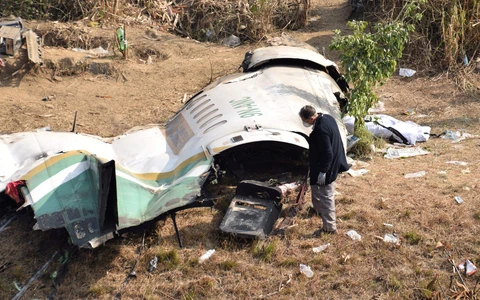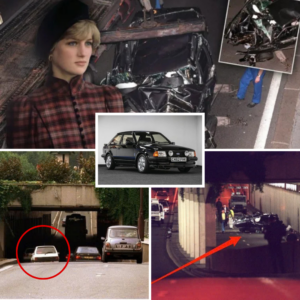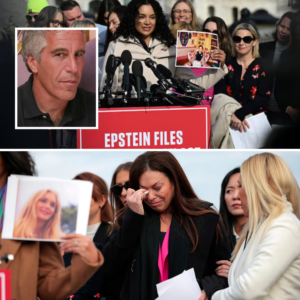On June 12, 2025, Air India Flight AI171, a Boeing 787-8 Dreamliner bound for London Gatwick, crashed moments after takeoff from Sardar Vallabhbhai Patel International Airport in Ahmedabad, India. The catastrophic incident claimed 260 lives, including 241 passengers and crew onboard and 19 people on the ground. The tragedy, one of the deadliest aviation disasters in recent history, has since been shrouded in controversy, with a retired aviation engineer now raising explosive allegations that the black box recovered from the wreckage may not be genuine. These claims, centered on a mismatch in flight numbers, have sparked intense speculation about a potential cover-up, casting a shadow over the ongoing investigation.
The Crash of Air India Flight AI171
The ill-fated flight took off at 1:39 p.m. local time, accelerating to a takeoff speed of 153 knots (approximately 283 km/h) and reaching a maximum airspeed of 180 knots (333 km/h). Within 32 seconds of becoming airborne, the aircraft plummeted into a medical hostel complex near the airport, killing nearly everyone onboard and several residents on the ground. The sole survivor, British national Vishwashkumar Ramesh, described the harrowing moments of the crash, recounting the deaths of crew and passengers around him. The preliminary report by India’s Aircraft Accident Investigation Bureau (AAIB), released on July 12, 2025, pointed to a critical issue: the fuel control switches for both engines were moved from the “RUN” to the “CUTOFF” position just three seconds after takeoff, starving the engines of fuel and causing a loss of thrust. Moments later, a pilot was heard on the cockpit voice recorder (CVR) asking, “Why did you cut off the fuel?”—a question that has fueled intense scrutiny of the pilots’ actions.

The black boxes—comprising the Flight Data Recorder (FDR) and Cockpit Voice Recorder (CVR)—were recovered relatively intact, with the FDR located within 28 hours of the crash and the CVR found on June 16. Using a “Golden Chassis” sourced from the United States, investigators extracted 49 hours of flight data and two hours of cockpit audio, providing critical insights into the final moments of Flight AI171. The AAIB’s preliminary findings, supported by these recordings, have focused on the fuel control switches, which are guarded by brackets and a stop-lock mechanism to prevent accidental movement. The report noted that the switches were flipped almost simultaneously, an action that aviation experts, including U.S. specialist John Nance, described as highly unusual during flight, especially during the critical climb phase.
The Allegations of Forgery
In a shocking twist, a retired aviation engineer, whose identity has not been publicly disclosed, has come forward with claims that the black box recovered from the wreckage is not authentic. The engineer alleges that the serial number or flight identification data on the black box does not match the records for Flight AI171. This discrepancy, according to the engineer, suggests that the device may have been deliberately replaced to obscure the true cause of the crash. While no official statement from the AAIB or Air India has confirmed or refuted these claims, the allegations have ignited a firestorm of speculation, raising questions about the integrity of the investigation and the potential for a cover-up.
The engineer’s claims hinge on the meticulous record-keeping in aviation, where black boxes are uniquely identified and linked to specific aircraft and flights. A mismatch in flight numbers could indicate either an administrative error—an unlikely but possible scenario—or intentional tampering. The engineer argues that such a discrepancy is not a trivial oversight, given the rigorous protocols surrounding black box handling and analysis. If true, the implications are profound: a falsified black box could conceal critical evidence about the crash, potentially shielding responsible parties from accountability or hiding systemic failures within Air India or its regulatory oversight.
Context of the Investigation
The AAIB’s preliminary report has already drawn significant attention to the actions of the pilots, Captain Sumeet Sabharwal and First Officer Clive Kundar. The report indicates that the fuel control switches were moved to the CUTOFF position within a second of each other, an action that would have required deliberate effort due to the guarded design of the switches. The cockpit voice recording captures one pilot’s confusion, with a question about why the fuel was cut off, while the other pilot reportedly denied responsibility. This exchange, combined with the distress call of “MAYDAY MAYDAY MAYDAY” transmitted 30 seconds after takeoff, suggests a chaotic and desperate situation in the cockpit.
The investigation has also ruled out several potential causes. The aircraft was within allowable weight limits, no dangerous goods were onboard, and there was no significant bird activity in the flight path. The fuel was tested and found to be of satisfactory quality, and other equipment settings were normal for takeoff. Despite these findings, the report explicitly avoids drawing conclusions, emphasizing that the investigation is ongoing.

However, the engineer’s allegations introduce a new layer of complexity. If the black box data has been tampered with, it could undermine the entire investigation, casting doubt on the reliability of the flight data and cockpit audio. The AAIB has not publicly addressed the forgery claims, but the engineer’s assertions have amplified public skepticism, particularly among victims’ families who are demanding transparency.
Broader Implications and Public Reaction
The allegations come at a time when Air India and its low-cost subsidiary, Air India Express, are already under scrutiny. The European Union Aviation Safety Agency (EASA) is investigating Air India Express for allegedly failing to comply with a directive to replace engine parts on an Airbus A320, with reports of falsified records to show compliance. While this issue pertains to a different aircraft, it fuels concerns about systemic lapses in maintenance and oversight within the Air India group, lending credence to the engineer’s claims in the eyes of some critics.
Victims’ families, still grappling with the loss of loved ones, have expressed outrage over the possibility of a cover-up. Community members in Leicester, home to many of the 53 British victims, have called for international oversight of the investigation, citing distrust in the AAIB’s preliminary findings. The Indian Pilots’ Guild has also reacted strongly, condemning suggestions of pilot error as premature and inflammatory, especially in light of the forgery allegations.
Analyzing the Forgery Claims
The retired engineer’s claims, while serious, require careful scrutiny. Black box data extraction is a highly technical process, conducted under strict protocols to ensure chain-of-custody integrity. The AAIB’s use of a U.S.-sourced Golden Chassis to download the data suggests international cooperation, which could complicate any attempt at tampering. Moreover, the black boxes were reported to be in good condition, reducing the likelihood of data corruption. However, the possibility of a swapped device cannot be entirely dismissed without a transparent audit of the black box’s serial numbers and chain of custody.

A mismatch in flight numbers could theoretically result from a clerical error, such as incorrect labeling or documentation during the recovery process. Alternatively, it could point to a deliberate act, possibly to conceal pilot error, mechanical failure, or external interference. The fuel switch issue already suggests human error or intentional action, as the switches’ guarded design makes accidental movement unlikely. If the black box is indeed inauthentic, it could indicate an attempt to manipulate the narrative around these events.
Challenges and Next Steps
The AAIB, supported by experts from the UK, US, and the UN, faces mounting pressure to address the forgery allegations. The investigation team, which includes experienced pilots, engineers, and flight recorder specialists, must verify the authenticity of the black box data and provide a detailed public response. Failure to do so risks further eroding public trust, particularly given India’s history of aviation safety concerns.
The next steps in the investigation will likely involve a forensic analysis of the black box’s serial numbers, data integrity, and chain of custody. International partners, such as the U.S. National Transportation Safety Board (NTSB), may be called upon to validate the findings. Meanwhile, the Indian government has promised a parliamentary review of aviation safety protocols, with the AI171 crash expected to dominate discussions.
Conclusion
The allegations of a falsified black box in the Air India Flight AI171 crash have transformed a tragic accident into a potential scandal of global proportions. While the AAIB’s preliminary report points to a critical error involving the fuel control switches, the retired engineer’s claims of a flight number mismatch raise the specter of a cover-up. As investigators work to unravel the truth, the families of the 260 victims, along with the public, demand clarity and accountability. The integrity of the black box data, the credibility of the AAIB, and the reputation of Air India hang in the balance as this investigation unfolds.
Whether the engineer’s allegations prove to be a misunderstanding or evidence of foul play, they underscore the importance of transparency in aviation disaster probes. The world watches as India’s authorities navigate this complex and emotionally charged investigation, with the hope that the truth—whatever it may be—will bring closure to those affected by this devastating tragedy.




